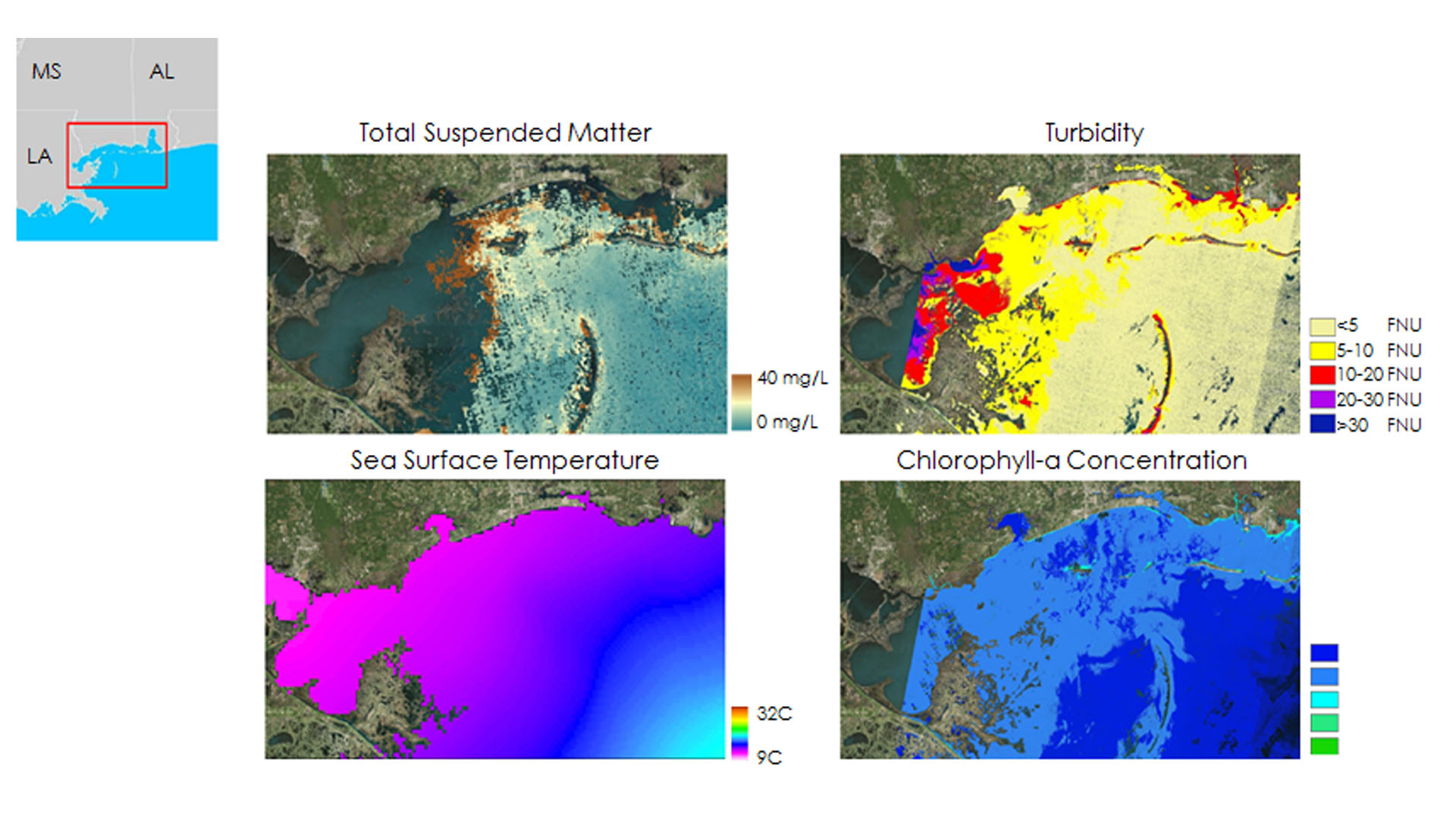Mississippi Sound Water Resources

Synthesizing Trends in Water Quality Parameters Affecting Oyster Reef Health in the Mississippi Sound Using NASA Earth Observations
Commercially-harvested oysters are a significant ecological and economic driver in multiple coastal regions throughout the world. In the last decade, the Mississippi Sound has seen a rapid decline in oyster reef production, especially in the years following large ecological disturbances such as Hurricane Katrina in 2005 and the flooding of the Mississippi River in 2011. In partnership with the Mississippi Department of Marine Resources, the NASA DEVELOP team utilized remotely-sensed products in order to create a climatology and time series of specific water quality parameters that can have impact on oyster reef productivity. These parameters included salinity, sea surface temperature, chlorophyll-a, aDG (absorption due to gelbstoff and detrital material), total suspended matter, and turbidity. The project utilized data from several Earth observing satellites including Aqua and Terra MODIS, SMAP, Landsat 5 TM, Landsat 7 ETM+, Landsat 8 OLI and TIRS, and MUR, as well as data from ESA's Sentinel-2 MSI and SMOS. The results from this project could potentially assist the Mississippi Department of Marine Resources by providing products for additional mapping and assessment of future oyster reef health in the Mississippi Sound. These products will also allow the project partners to improve future management practices for species recovery and the creation of additional oyster reefs.
Project Video:
Don't be Shellfish: Water Quality and Oyster Reef Production in the Mississippi Sound
- Location
- NASA Langley Research Center
NASA Jet Propulsion Laboratory - Term
- Spring 2017
- Partner(s)
- Mississippi Department of Marine Resources
- NASA Earth Observations
- Aqua, MODIS
Terra, MODIS
SMAP, Radiometer
SMOS, MIRAS
Landsat 5, TM
Landsat 7, ETM+
Landsat 8, OLI/ TIRS
MUR
Sentinel-2, MSI - Team
- Emily Gotschalk (Project Co-Lead)
Brigitte Moneymaker (Project Co-Lead)
Katherine Cavanaugh
Jessica Gregory
Catherine Stolfi
Erika Higa - Advisor(s)
- Dr. Kenton Ross (NASA Langley Research Center)
Ben Holt (NASA Jet Propulsion Laboratory)
Dr. Severine Fournier (NASA Jet Propulsion Laboratory)